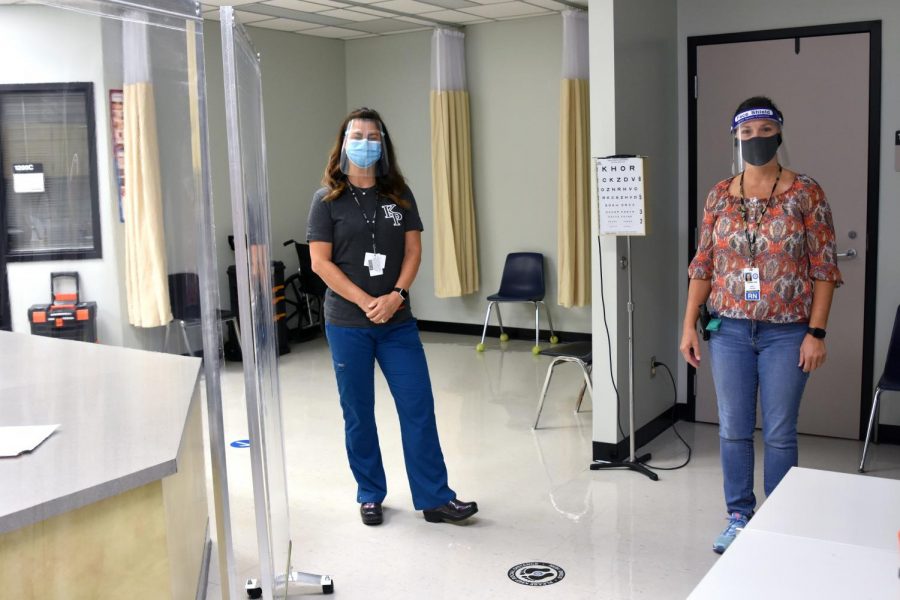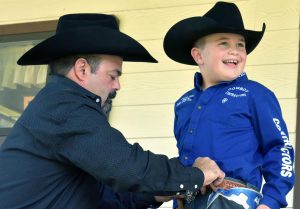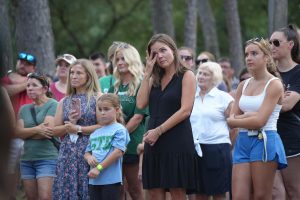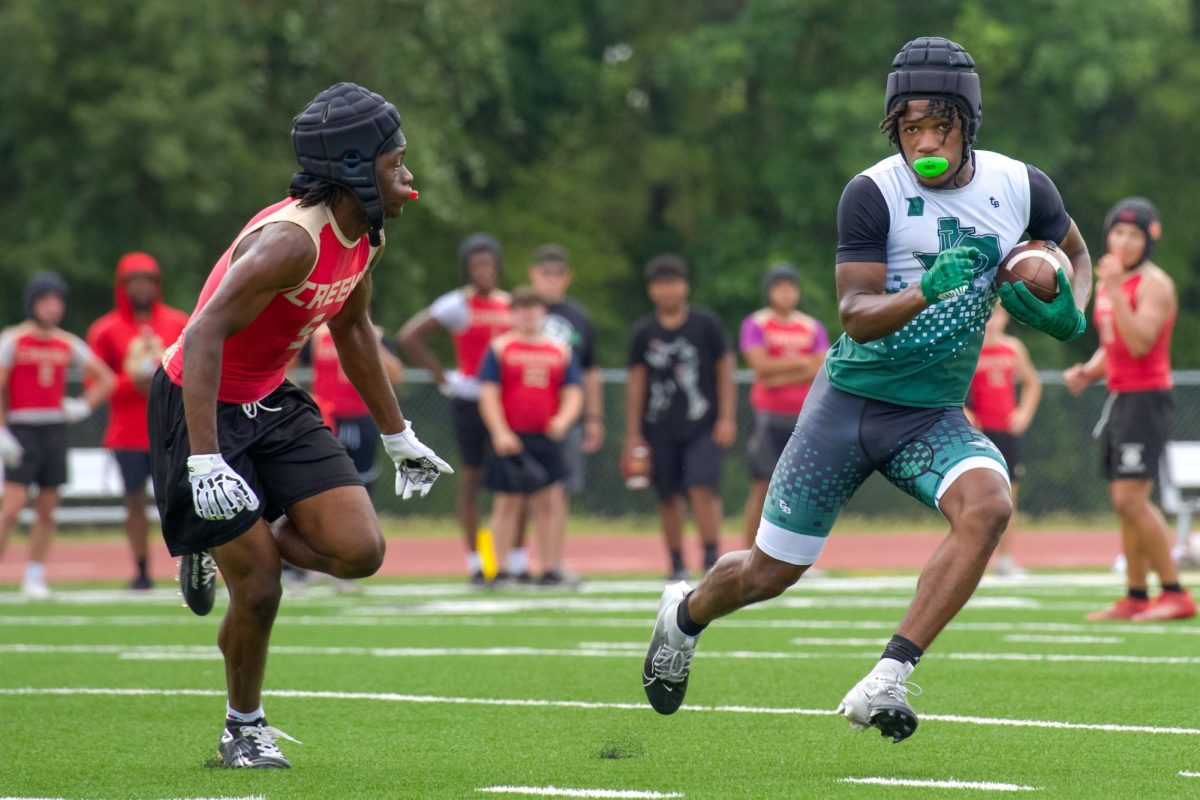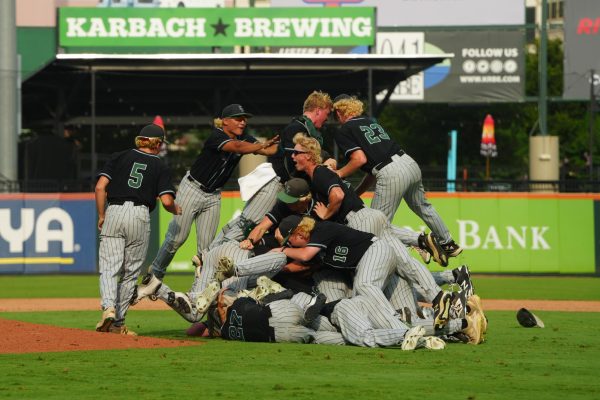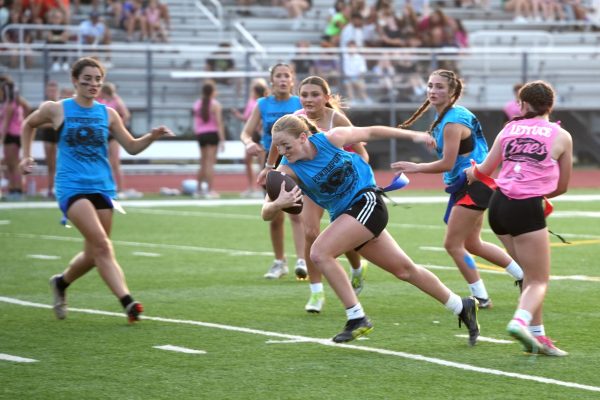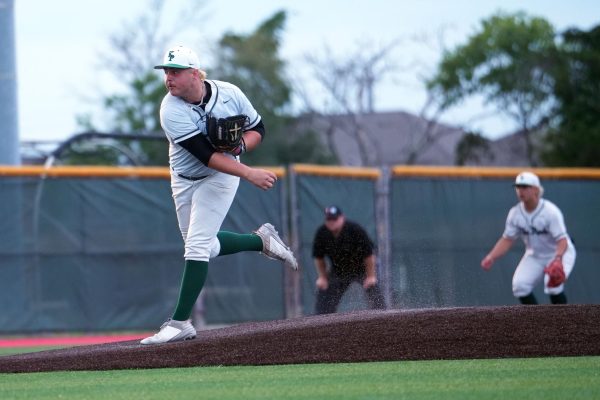‘Sick clinic’ opens with hopes of containing germs
September 7, 2020
Room 1401, which used to be the ISS room, now serves a very different purpose. The desks and computers in Room 1401 have been traded in for cots. The room that used to house in-school suspension students is now designated as the “sick clinic.” The original clinic near the front office is now the “well clinic.”
Besides Kingwood Park, West Lake Middle School is the only other school in the district to have two separate clinics at this point.
“Mrs. [Lisa] Drabing and Mr. [Wes] Solomon have been very, very gracious so that we can ensure that not only the staff but the students remain separate if we’re suspicious [of coronavirus cases],” said Mary Fischer, nurse of the “sick clinic.”
With a global pandemic taking place, this is only one of many changes that were made in order to prepare for students to return back to school on Aug. 24. Fischer is on the Health Advisory Committee for the district, which has been planning since May for the return back to school. With each change that the TEA and the CDC released, the committee met to make sure that they had the latest information that allowed them to reopen the school safely.
“I think right now it’s the hardest with all the information that has come out to make sure that what we do, we do it right,” Fischer said. “You know, for the safety of not only the students, but the teachers and the family members that we all go home to. [It’s important that] what we do when we reopen our schools, we do it right.”
In addition to two separate clinics, personal care items that have normally been kept in the nurse’s office have been moved to house offices.
“A lot of times, a student will need a safety pin or, you know, forgot to put deodorant on,” Fischer said. “They don’t have to go to their house office, just the closest house office, so it should make the student return back to their classroom even faster.”
As for socially distancing in the clinics, only six people are allowed in at a time, making a total of seven with the nurse. Seats outside the door sit six feet apart for those waiting to enter. Arrows line the floors to ensure that there’s no counterflow between those entering and exiting. All doors have to remain shut, and no one is allowed to enter either clinic until they have been assessed by a nurse to make sure that they don’t go into the wrong clinic, Fischer said.
Additionally, no student can go to the clinic in between classes or during flex lunch unless it’s a scheduled visit. If one is feeling ill, they must ask their teacher to call the clinic and schedule a visit. This ensures that the student is being sent to the correct clinic for their symptoms, and that the clinic is not full at that time.
“I think the biggest concern is just making sure that everybody abides by the rules, making sure that they wear their face coverings and they wear them correctly,” Fischer said.
Nurse Julie L’Italien will primarily be working in the “well clinic” this year, while Fischer will be primarily in the “sick clinic.” In the event of a suspected coronavirus case in the sick clinic, Fischer will assess the student, taking into account any allergies or underlying conditions the student may have. If the student shows one or more of the 14 symptoms that the CDC and TEA has published, they are to be sent home.
Since the school cannot test for the coronavirus, they have to presume that any student showing one or more symptoms is ill. The student’s parental guardian would then be contacted, and asked to pick the student up. Instead of coming inside and checking the student out, they would be asked to stay in their car and call upon arrival.
From there, Fischer will escort out the student and check the parent’s ID to make sure that the student was being put in the correct car. Once the student has left the school, they would have to isolate for 10 days and be symptom free for at least 24 hours before returning.
However, if the student were to get tested for the coronavirus and the test came back negative, they would follow regular return to school procedures.
These new responsibilities added to the job description of a school nurse is nowhere near what has been asked of Fischer during her previous years as a nurse at Kingwood Park. Despite the changes that a worldwide pandemic brings, Fischer said she has not once reconsidered her career as a nurse.
“Everyday in the morning and at night, I’m looking at the CDC website,” Fischer said. “[Things are] not stagnant, which is what I enjoy. They’re always evolving and changing.”
Fischer said that there was some excitement in returning back to school. As a nurse, she not only develops a relationship with students, but also with their parents and oftentimes grandparents. She said that it has been tough not talking to anyone or seeing anyone for these past few months, so to see some familiar faces with the return to school was comforting.
“It was nice to see [students’] faces,” Fischer said. “Part of them at least.”


